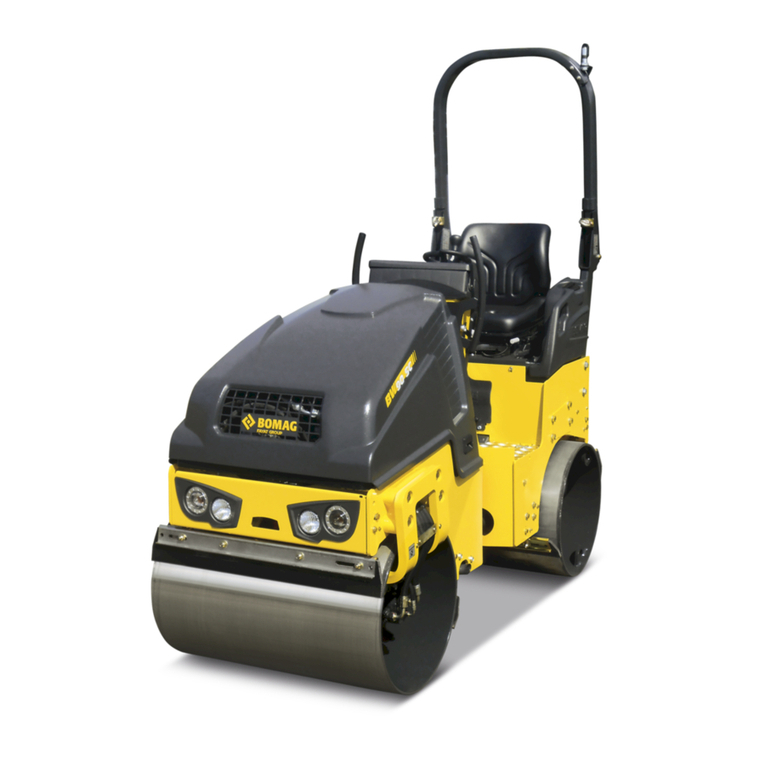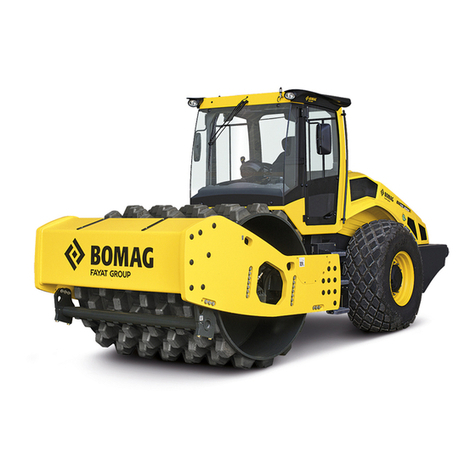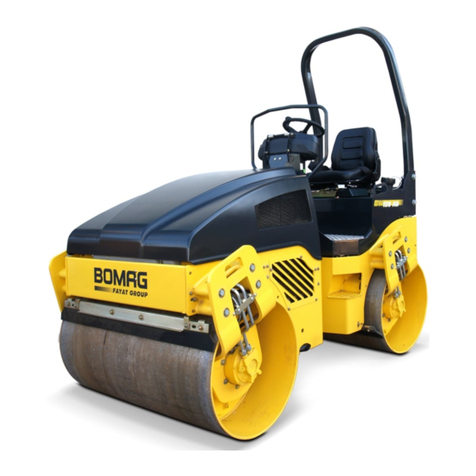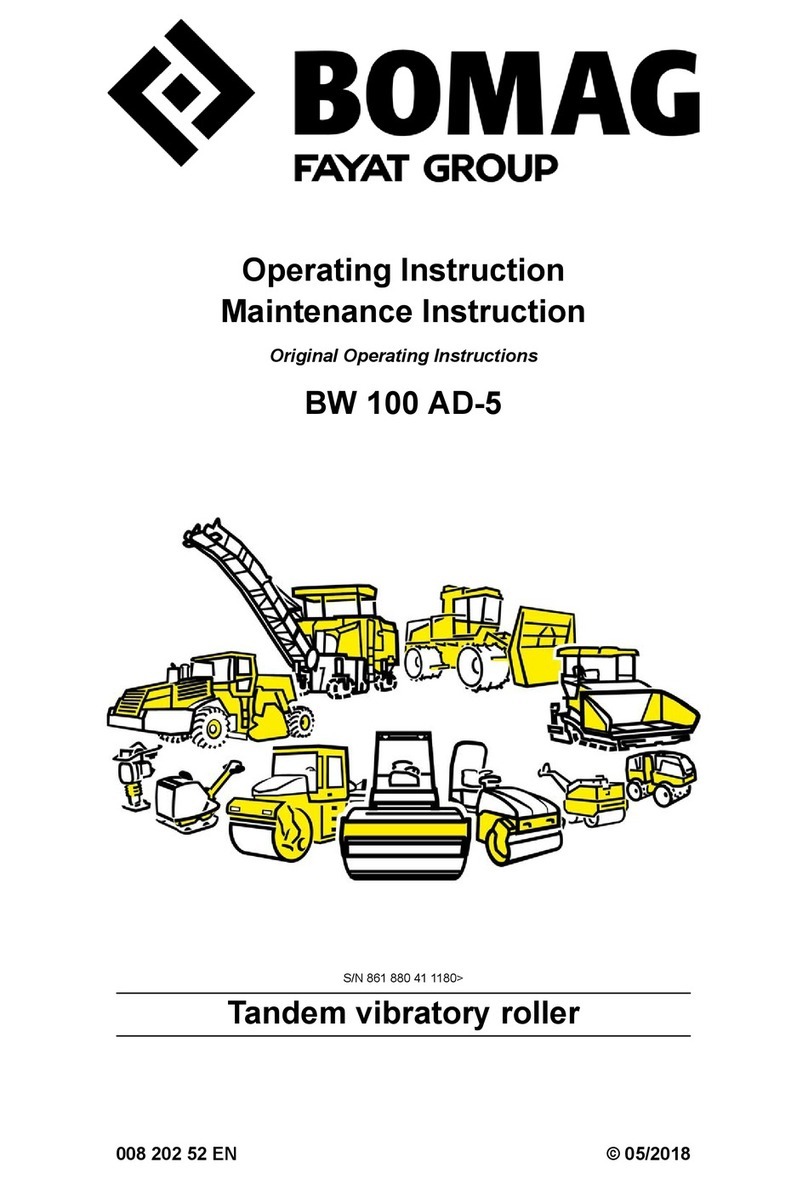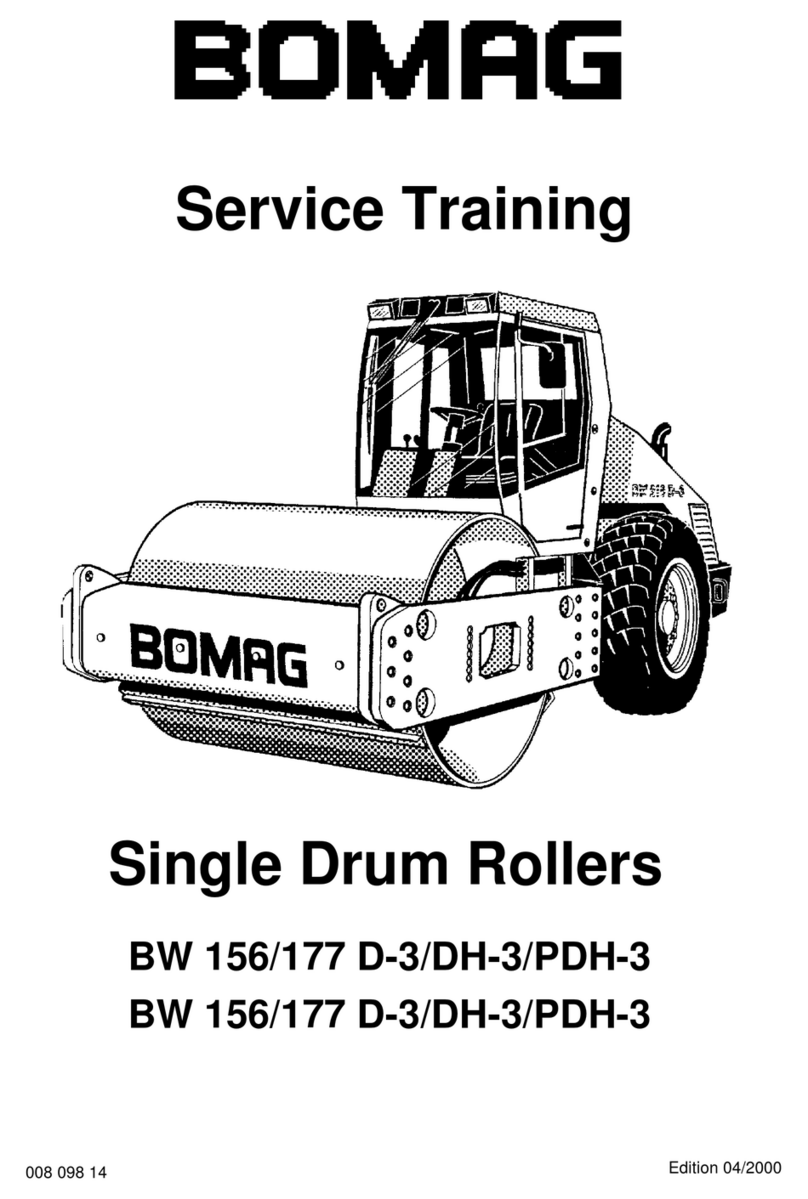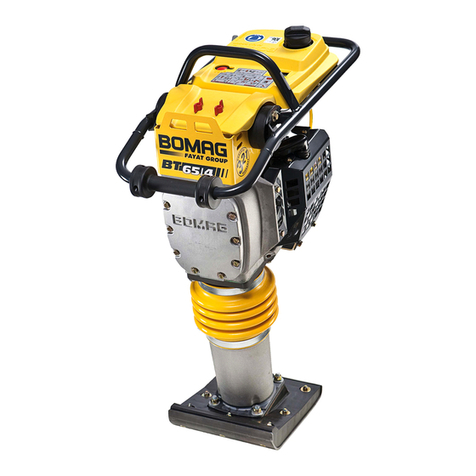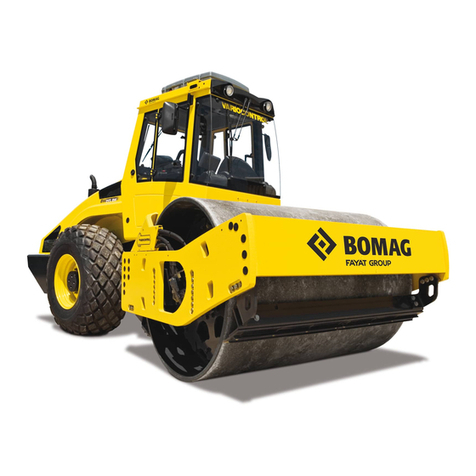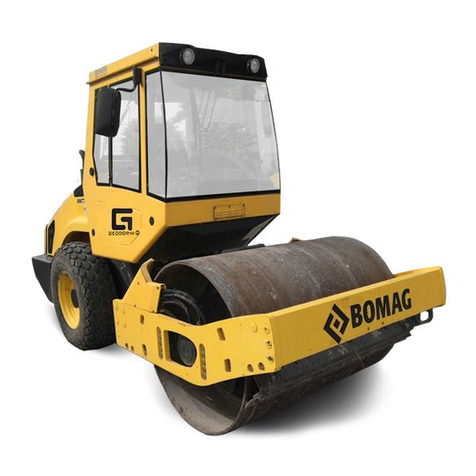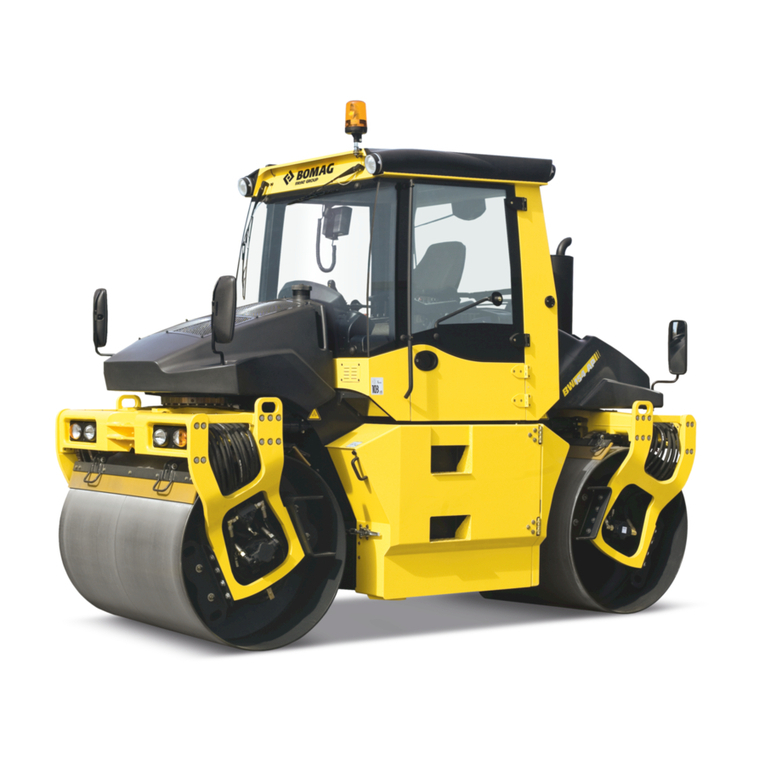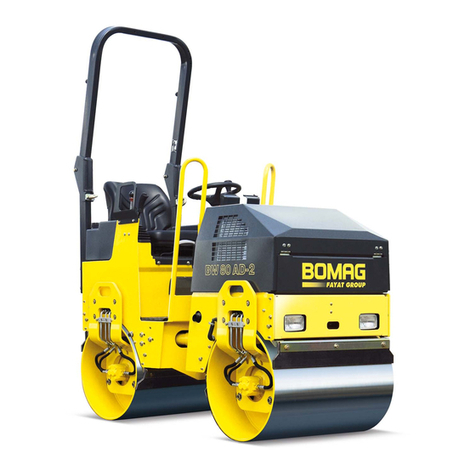
Table of Contents
BOMAG 5008 911 63
12.27 Checking the compression 361
12.28 Check, adjust the valve clearance 362
12.29 Boost fuel solenoid valve 364
12.30 Engine shut-down solenoid 365
12.31 Air filter 366
12.32 Cleaning, changing the dry air filter cartridge 367
12.33 Heating flange on engine 369
12.34 Checking the heating flange control 372
12.35 Electric throttle control 373
12.36 Engine monitoring 375
12.37 Engine 378
12.38 Special tools, Deutz engine (BFM 2012) 380
Air conditioning system 393
13.1 Physical basics 394
13.2 Refrigerant R134a 397
13.3 Compressor oil / refrigeration oil 398
13.4 Working principle of the air conditioning system 399
13.5 Monitoring devices 399
13.6 Description of components 400
13.7 Checking the compressor oil level 406
13.8 Checking the magnetic clutch 407
13.9 Inspection and maintenance work 408
13.10 Checking, replacing the refrigerant compressor V-belt 408
13.11 Service the air conditioning 409
13.12 Drying and evacuation 412
13.13 Emptying in case of repair 412
13.14 Leak test 413
13.15 Filling instructions 414
13.16 Trouble shooting in refrigerant circuit, basic principles 417
13.17 Trouble shooting, refrigerant circuit diagram 421
13.18 Trouble shooting procedure 422
13.19 Steam table for R134a 432
Replacing the cab window panes 437
14.1 Assembly of window panes 438
14.2 Special tools 439
14.3 Auxiliary materials 440
14.4 Removing and installing the window pane 442
Drum 447
15.1 Special tools, drum, single drum rollers 448
15.2 Repair overview for drum 450
15.3 Removing and installing the drum 457
15.4 Repairing the drum 462
15.5 Disassembling and assembling the change-over weight 495
15.6 Changing the rubber buffers and adjusting the pretension 498
Oscillating articulated joint 501
16.1 Special tools, oscillating articulated joint (BW177 to BW 216) 502
16.2 Repair overview oscillating articulated joint 504
